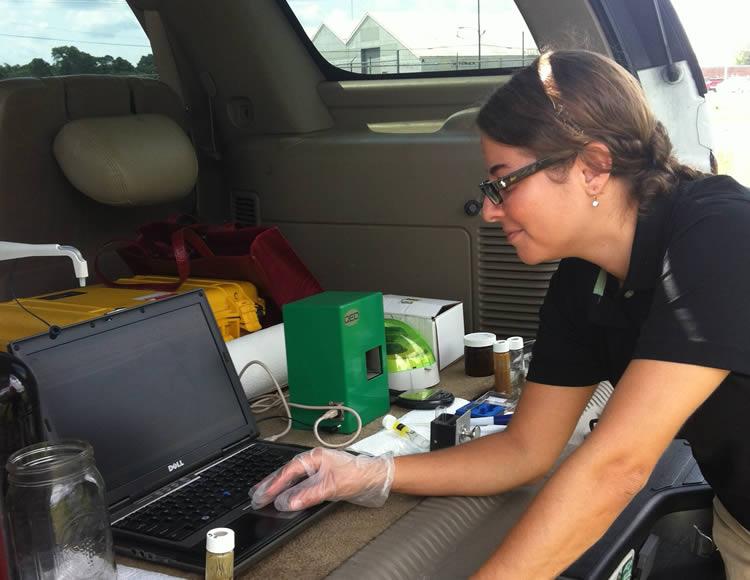Recent Evaluation of MCERTS Laboratory Analysis in Comparison with QROS Analysis
A major UK consultant recently undertook an evaluation of MCERTS laboratory performance for petroleum hydrocarbons.Ten identical samples of sand and gravel were prepared. Into five of the sets was added peat. (Peat in common with other organic material is known to interfere with the lab TPH analysis.) A 5000ppm concentration of diesel was spiked into them .one of each set was sent off to 4 different MCERTS accredited labs, and also to QROS, for analysis using the QED onsite hydrocarbon analyser.
The samples were sent in non air tight screw top jars and took around 2 days to arrive at the labs. During this time, a significant proportion of the spiked material would be expected to have evaporated, significantly distorting the result (this is another reason why on site analysis is so useful: the samples are fresh and retain their similarity to the area being tested.)
Of the 4 labs, 2 were unable even to identify that the hydrocarbon was diesel. Under WM3 guidance, you need to be able to identify the hydrocarbon. The results that came back ranged from just under 2000 to just over 8000 ppm. Of the 4 laboratories, two could not get agreement between any of the duplicates. The other two were in close agreement and gave a value of 3000 ppm. QROS analysis also showed 3000 ppm. It was accepted that 3000 ppm was correct, taking into account the amount of diesel which had been lost from the samples en route.
The samples containing sand , gravel and peat should also have given values of around 3000 ppm, as they were effectively the same as the other two and affected by the same amount of evaporation. The laboratories all gave values of higher than 5000 ppm in the samples containing peat, showing that there was a significant level of interference from the peat, almost double the TPH value. The QED was the only analyser which gave the correct result of 3000 ppm.
The very portable QED gives instant results for hydrocarbon analysis.

